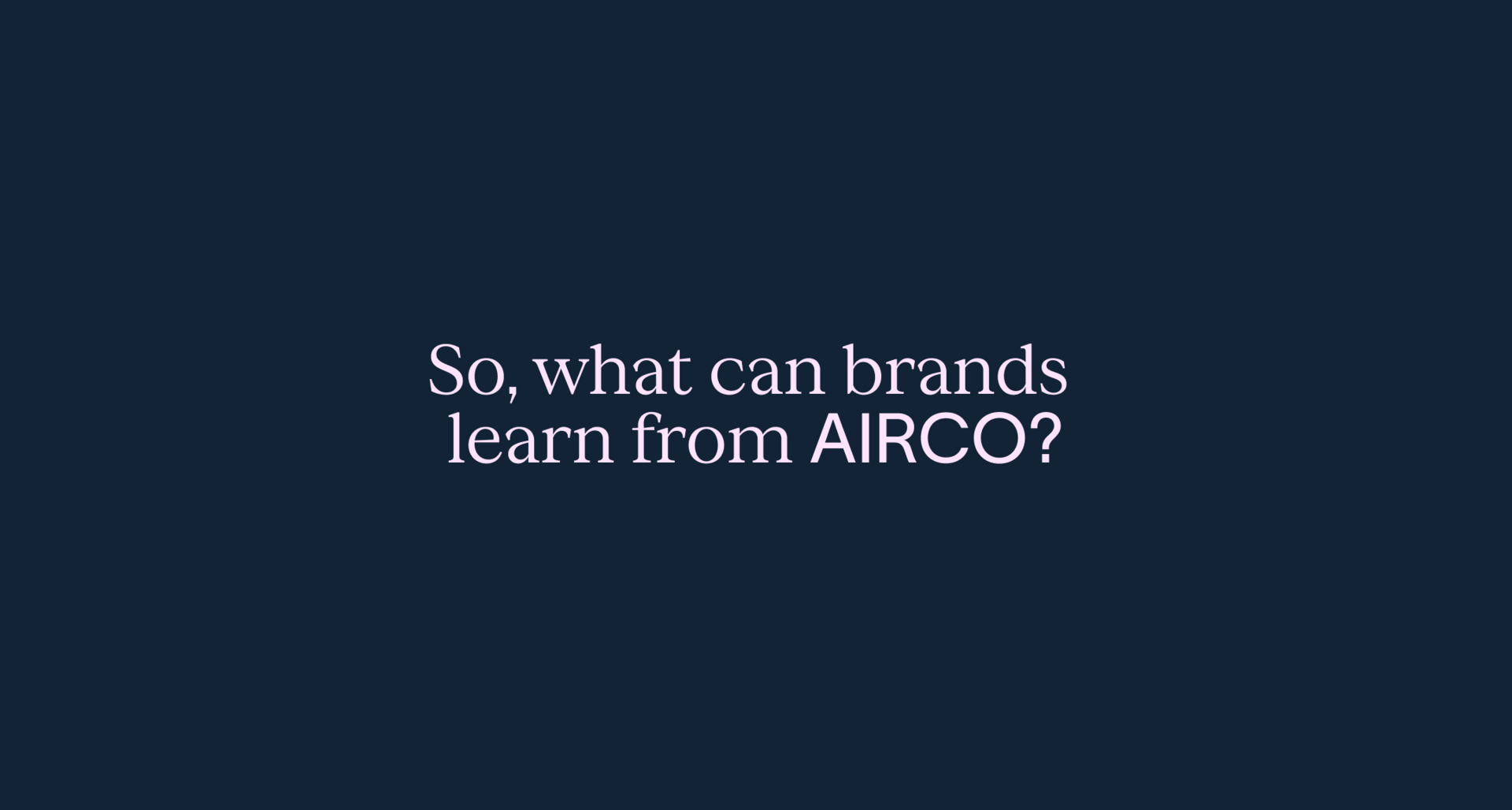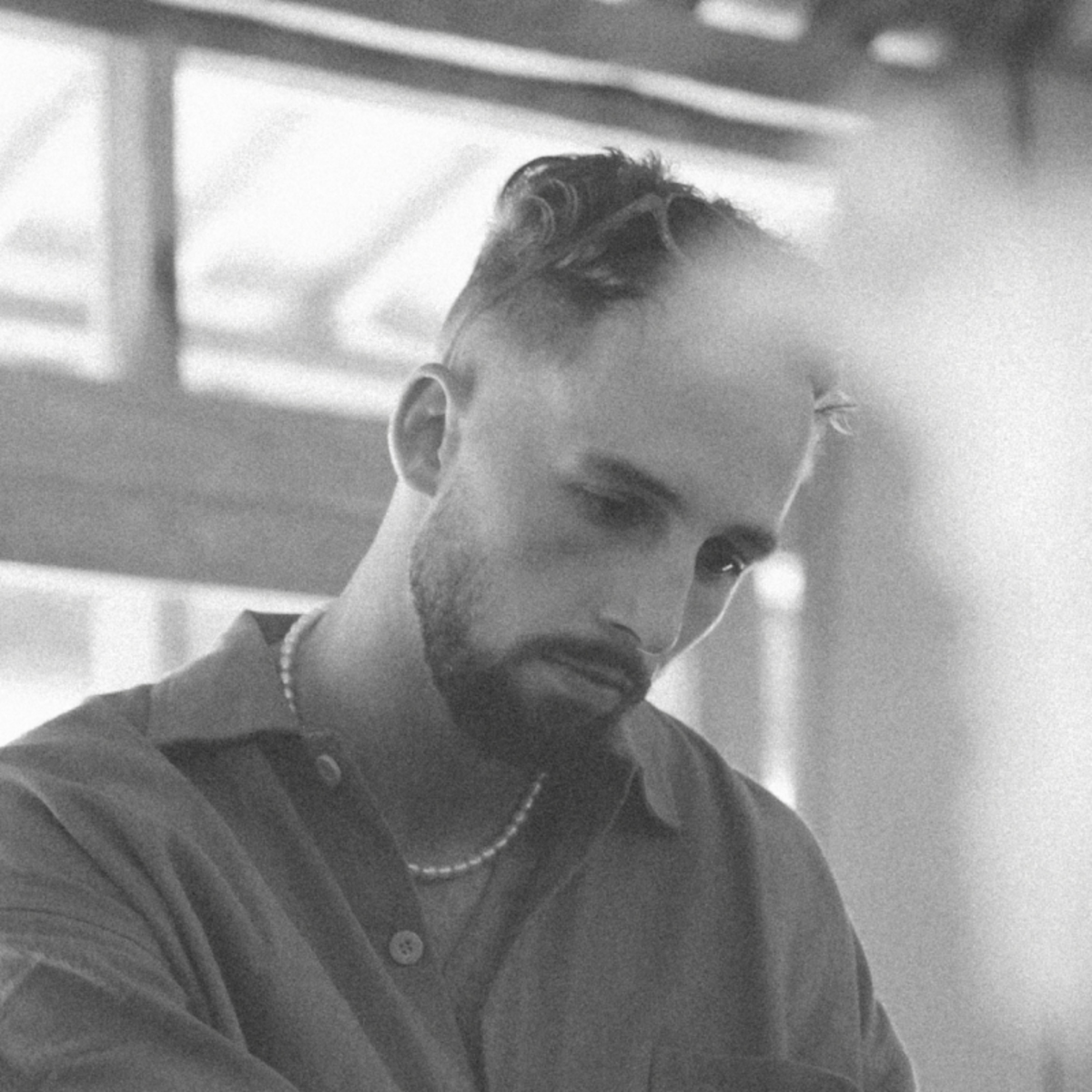
Tech brands often feel like they’re stuck in 2008 - predictable creative, clunky messaging, and walls of data. AIRCO, formerly Air Company, flipped the script by pairing breakthrough carbon conversion technology with an identity that feels more like a design-led lifestyle company than a traditional tech business.
Their identity doesn’t just explain what they do - it makes people want to engage with it. Stylish, sharp, and culturally aware, AIRCO shows how even the most advanced innovation can be made accessible, desirable, and worth paying attention to.


AIRCO always knew where it was headed, but instead of launching straight into the complex B2B space, they took a different route. They started with products that were unexpected, human, and above all - shareable, eye-catching and engaging.
Products like AIR Hand Sanitizer and AIR Eau de Parfum were never the end game - they were the hook. A way to bring carbon conversion out of the lab and into people’s lives, something you could see, touch or gift. This approach helped build interest from everyday consumers, and in doing so, opened an entirely new pool of supporters for their mission to achieve global energy independence, while opening doors to larger B2B opportunities.


Design
AIRCO treats design not as an afterthought, but as a communication tool. When your product is built on complex science, the real challenge isn’t just showing it - it’s helping people understand what it does, why it matters, and how it fits into their world. From interactive pages like AIRMADE™ to social media carousels, AIRCO makes complex ideas legible through smart, elegant design. It’s beautiful, yes - but it’s also functional, educational, and clear.
Design becomes a gateway into AIRCO’s universe, turning the curious into advocates.
Aesthetics
Visually, AIRCO plays in a different league.The brand blends clean, Swiss-style layouts with photography that wouldn’t feel out of place in Vogue. It’s clinical but artistic. Precise but human. And in an industry full of flat diagrams and gradients reminiscent of an old Microsoft PowerPoint, that kind of taste stands out.
It’s what pulls in people who may not understand the tech to begin with - but instinctively respect the brand.

Bridging the Groundbreaking and the Ground-Level
AIRCO may be working on some of the most advanced Synthetic Fuel Technology in the world, but they’re not hiding behind the science. There’s a ‘groundedness’ to how they show up. They are highly ambitious, but they also know how to meet people where they are.
In April, they announced a milestone collaboration with the U.S. Department of Defense to demonstrate AIRMADE® fuel. It’s huge news - both complex and important. But for many, it’s the kind of event that feels distant. Impressive, but out of reach.
So in the same month, they launched FUEL STORE: a temporary retail space selling 11 one-of-a-kind, design-led products. The announcement came with a question: “Where’s the best place to talk about the next era of energy?” Their answer? Not a conference. A shop.
That duality of global ambition and everyday access is what makes AIRCO special. It brings their mission back down to street level. It invites conversation. And it makes a high-end, future-facing brand feel human, open, and real.

Brand Building Starts with Who’s in the Room
Behind AIRCO’s clean visuals and confident voice is a team that knows brand building. Their creative leadership doesn’t always come from traditional energy or climate backgrounds - it comes from fashion, tech, and design-led consumer culture.
Design Director Jake Hobart, brings experience from Nike, IBM, and Etsy - brands where design and storytelling go hand in hand. Content Director Jodi Taylor came from the fashion and lifestyle industries, and it shows in the tone and editorial touch of AIRCO’s output. Andrew McKechnie (ex-Apple & Verizon) advocates for accessible communication about the brand’s advanced scientific technology, shaping a POV that’s as strategic as it is stylish.


AIRCO proves that even the most technical businesses can build brands people actually care about, if they invest in brand like they invest in product.
Here are 5 takeaways worth remembering:
1. Meet people where they are.
Your tech might live in a lab, but your story should live in the world. Use shops, pop-ups, and real conversations to make big ideas feel familiar.
2. Hire for taste.
People judge what they see. A team that understands culture, design and aesthetics will make your brand feel intentional from the get-go.
3. Don’t neglect aesthetics.
Good design isn’t decoration - it’s positioning. A clear, cohesive visual identity can make your brand feel credible, premium, and taken seriously from day one.
4. Use consumer attention to build momentum.
Products like AIR Vodka weren’t about revenue. They sparked curiosity, created buzz, and helped open doors for long-term growth.
5. Make complexity accessible.
Whether you’re selling science, jeans or something in between, design helps people get it. Use visuals, structure, and storytelling to make hard things feel simple and worth caring about.
Shot of the good stuff


